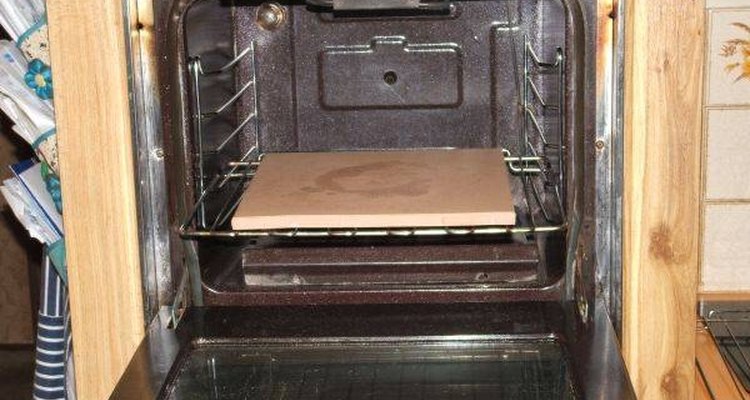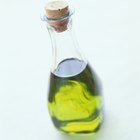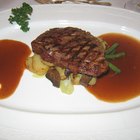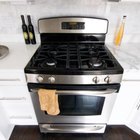
If you have watched television cooking shows and seen the baking stones the chefs use, you probably wonder how to get one for yourself. You can purchase them easily from online baking supply stores, or you can save money and make your own. For a fraction of the cost, you can bake your own breads and pizzas like a pro, if you follow a few simple steps.
Purchase a piece of unglazed quarry tile such as Saltillo tile from Mexico. (See reference for online site.) Make sure you get the unglazed version, as sometimes the glazes contain lead, which could leach into your food. Other tiles can work but make sure they are clay and unglazed. Your tile should be a square about 20 inches long on each side, about 1/4 inch thick with an earthy red color. It should cost $2 to $5.
Wash the tile with simple water and a rag to remove any dust. Set it aside to dry as it will have absorbed some of the water. It is a porous stone. Do not wash it with soap or you will taste that later in your food.
Rub a thin layer of olive oil into the surface of the baking tile. This will season your tile so that food does not stick to it. Work it in by rubbing it in a circular motion until there is no shine remaining. If you leave extra oil on it, it will smoke when you heat it later.
Place the tile in a cold oven, then heat to 300 degrees Fahrenheit and bake it for about four hours. This will keep it from cracking later when you need higher heat, such as for baking pizza. Let the stone cool to room temperature. Store it in the oven until you need to use it.
To use your baking tile, leave it in the oven and let it come to the recommended temperature for whatever recipe you are using. Don't worry about measuring the heat of the tile, just the temperature of your oven. After the oven has been hot for about 5 minutes, the stone will be plenty hot. Lay your food on the hot tile carefully and let it bake for the recommended time. The bottom of the food will crisp because the stone will absorb the steam generated during baking.
Related Articles

How to Clean a Pizza Stone

How to Cook in Ceramic Bakeware

Directions for Cooking With Stoneware

How to Clean an Oven Liner

How to Bake Bread in a Clay Pot

How to Grill With a Pizza Stone and ...

How to Season Granite Grill Cooking ...

Glass Pie Pan Baking Tips

About Cooking Stones

How to Bake Chicken at 375

How To Clean Romertopf
Can You Oven Cook With Pottery?

Roshco Silicone Bakeware Instructions

How Long to Bake a Pizza With Lots of ...

How to Cook With Stainless-Steel Frying ...

How to Bake With a Pizza Screen

Directions for Cooking Frozen ...

How to Make Pan-Seared Baked Steak
How to Keep Biscuits Warm in a Chafing ...

Bagel Bites Heating Instructions
References
Writer Bio
Maryland resident Heide Braley is a professional writer who contributes to a variety of websites. She has focused more than 10 years of research on botanical and garden articles and was awarded a membership to the Society of Professional Journalists. Braley has studied at Pennsylvania State University and Villanova University.
Photo Credits
http://sourdough.com/gallery/d/3886-1/new_Gear+002.jpg